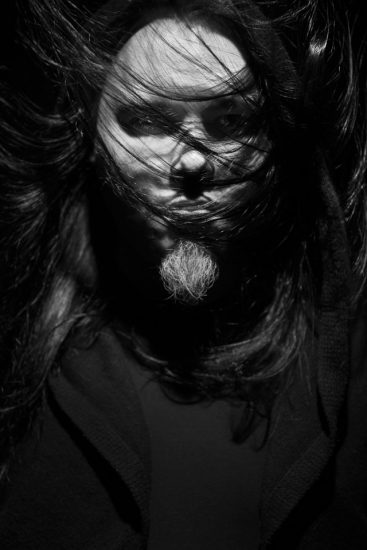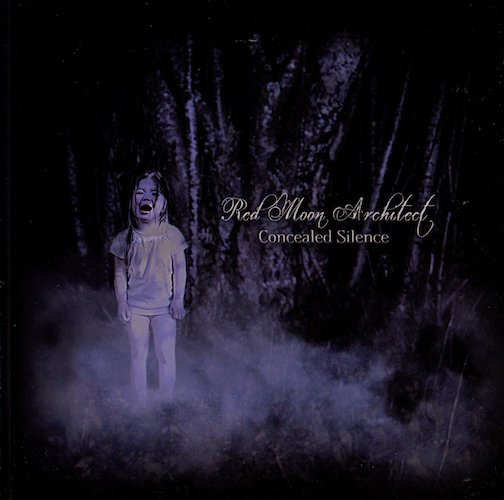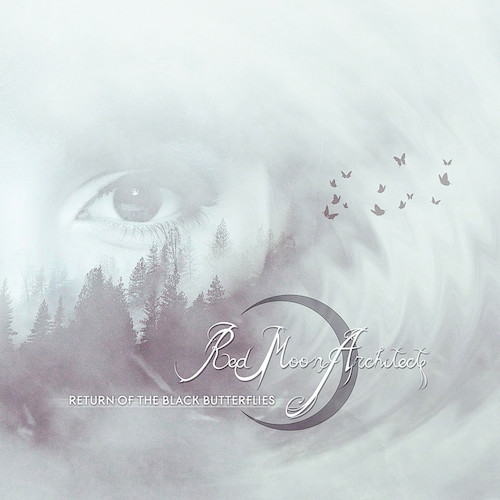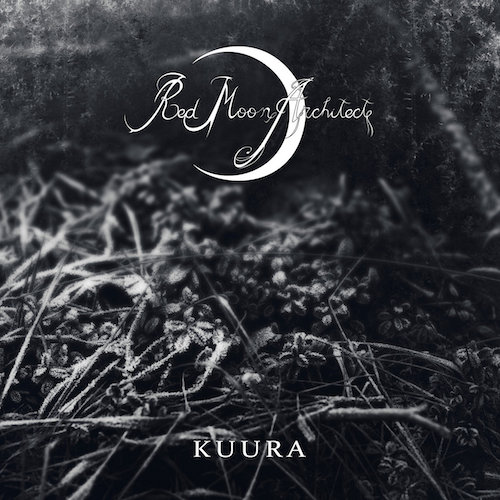(Comrade Aleks rejoins us with this interview of Saku Moilanen, the man behind Red Moon Architect.)
Red Moon Architect was started by Saku Moilanen as a melodic death doom project in Kouvola, Finland, in 2011. He recorded the debut album Concealed Silence (2012) with guest musicians, but after two more albums and the transformation of the solo project into a full band Saku returned in the spring of 2019 with a fourth album Kuura, which tends to a funeral doom sound. We’ve discussed with Saku the way Red Moon Architect grows.
Salute Saku! How are you? What new does Red Moon Architect work on?
We’ve been on a break for a while. Can’t tell just yet but we’re working! Awesome things coming up next year.
Saku, you started Red Moon Architect as a solo project. Did you already plan to develop it to the size of a full band during the recording of Concealed Silence?
I really didn’t plan about anything at that moment. A full band started to take its form when I needed to get the music to stages, to be played live. I never planned this to be a solo project. It was just the easiest way to get the music composed and release the first album. Sometimes it’s also a fun change to take responsibility for more of the instruments.
How would you summarize your intentions when you were working on Concealed Silence? Did you see it as a “melodic death doom” band or did you think it might grow into something different?
I had a vision of melodic doom metal yeah, but I didn’t have any specific restrictions, and still don’t. At that time I hadn’t even heard doom metal that much. A few songs from Swallow The Sun. That was it. I was only starting to learn guitar when composing the first album, so the sound is pretty much what came out from trial and error. I still have no idea what I’m playing in theory, when I’m using guitar.
How do you see the roots of melodic doom death? Did you feel it was a more suitable genre to channel your ideas?
I have to admit that I have no idea about the roots of the genre. I don’t like to think too much about genres anyway. I’m quite a complex person with a strong melancholic side. That’s the music that comes out most naturally. It may be death metal, doom metal, black metal, or something between. As long as the emotion of the music reaches the listener, I’m on a right track.
Your next album Fall was released with a full lineup — Anni and Juuso took part in the recording of the debut album as guests, but Jukka and Mattias were new members. Did the whole lineup help you with composing these songs or was it still your creation?
It was still my creation as far as music and lyrics go. Anni was already on the first album on one song. She’s always arranged her parts herself. Other than that, I’ve been composing all the music for now. I always record quite finished demos and only a few adjustments may be done in the studio after that.
How did you work in the studio as a band? How much time did you spend there?
I guess I sort of answered that part in the previous question, but with instruments, it’s more or less just recording final takes of what I’ve already composed. With singers it’s more of a brainstorming process. I want to give the vocals as much freedom as I possibly can, to get out-of-the-box ideas. Unless I have a really strong rhythmic or melodic idea. Usually I don’t. Especially with Anni’s vocals I feel like her arrangements bring our songs to life. And I know all of us in the band would agree on this.
You prepared two videos for Fall — can you tell if it was an effective move?
Well, I don’t know about effective. YouTube is one important channel and it was a strategy that we tried at the time. We’ve always had more listeners on Spotify, but I think it’s important to be everywhere. At least if you want people to find your music.
Red Moon Architect’s third album Return Of The Black Butterflies has a different structure in comparison with Fall: the tracks became longer and they seem to be more complicated. How long did it take to compose it?
Honestly, I think 12 hours. It was the fastest album I’ve ever composed. Usually I hear the songs in my head. With drums, guitars, bass, and everything. Then it’s just a technical process to get it out of my head. And as I’m working full time in my own studio, it’s quite fast.
What was the lineup on this album? I didn’t find information online…
We got our new current singer, Ville Rutanen, for that album. Other that that it was the same as with Fall.
You played at Tuska Festival, and that’s a good achievement itself. Do you feel the band got its deserved recognition? Were you satisfied with that?
For sure, yes! The whole festival area was as full as it can get and the mood was awesome. It’s a great festival and always a joy to be there. As a band or in the audience.
Your next album Kuura differs a lot from the previous work with its sheer funeral themes. How did you decide to switch to this minimalistic kind of music? And do I understand correctly that you used your mother tongue for these lyrics?
It was a once in a lifetime album that I just had to do. It’s not that commercial, easy to listen to, or anything like that, but I had to get it out of my system. The lyrics were in English, if I remember correctly. I wasn’t really in touch with this world at the time, or even sober. The lyrics are gone, and maybe that’s good.
Do you mean that this period was kind of… blurred for you?
Kind of, yeah. Extreme depression for me is always a state of mind where I feel like I’m living in my own alternative reality.
Was there a reason why you switched from Inverse Records to The Vinyl Division?
It’s a doom metal label specialized in vinyl releases, so it was a natural choice as he had been interested of the band for a long time. Everything went smooth and he’s a really good guy. I suggest you check out the label and their releases. For me the label is supposed to make my life as an artist easier. Choice of a label is always the one that feels like it works best at the time for that specific project. We aren’t tide to any label at the moment.
Do you plan to return to this material and play it live one day?
Never. It’s impossible to catch the same vibe and emotion live, that the album has. And we’ve all agreed on that. Those songs are meant to be listened to at home alone, or in a small group without distractions.
Did you pay more attention to lyrics on the previous albums? What kind of topics did you prefer back then?
I always pay a lot of attention to lyrics. Even on Kuura I did. I may not be the best writer, but I always try to give my best and improve the lyrics. It’s also the most time-consuming process of creating an album. Topics have always been more or less the same. Mental issues, all the downsides of life, despair, anger, and even hope. The last one being the most important one. Even at the darkest times, there’s always a glimpse of light.
Did you record Kuura with the same lineup?
We didn’t advertise it too much, but I did it all by myself. At first it was supposed to be released as a different project, but as soon as others in the band heard the songs, they were all convinced that it had to be released as an RMA album. After all, the band’s sound and song are a big part of me, and that album is one phase in that journey of life.
Do you feel these changes in Red Moon Architect’s sound reflect on its popularity? What was the feedback for Kuura?
Not really. It’s been the same. It’s a tough album to digest and most people just won’t get it. The feedback instead was surprisingly great. The ones who like that kind of extreme side of doom metal really got its point. All the reviews were from 8 to 10 stars and said that it’s one of the most impacting albums that has ever been released in the genre. I’ve also gotten personal feedback, that it has even caused physically anxious reactions to quite some of the listeners. If I was able to put the despair and emotion in the music on that level, I couldn’t be more happy. No matter what Spotify statistics say. It’s not a pop album anyway.
How do you see Red Moon Architect’s features nowadays? What kind of material may we expect from you in the future?
You can expect the best Red Moon Architect so far. It’s more in line with our previous material, just a more polished and mature version of it. I’ve put a lot of effort into composing lately, and it surely will deliver once it’s out.




